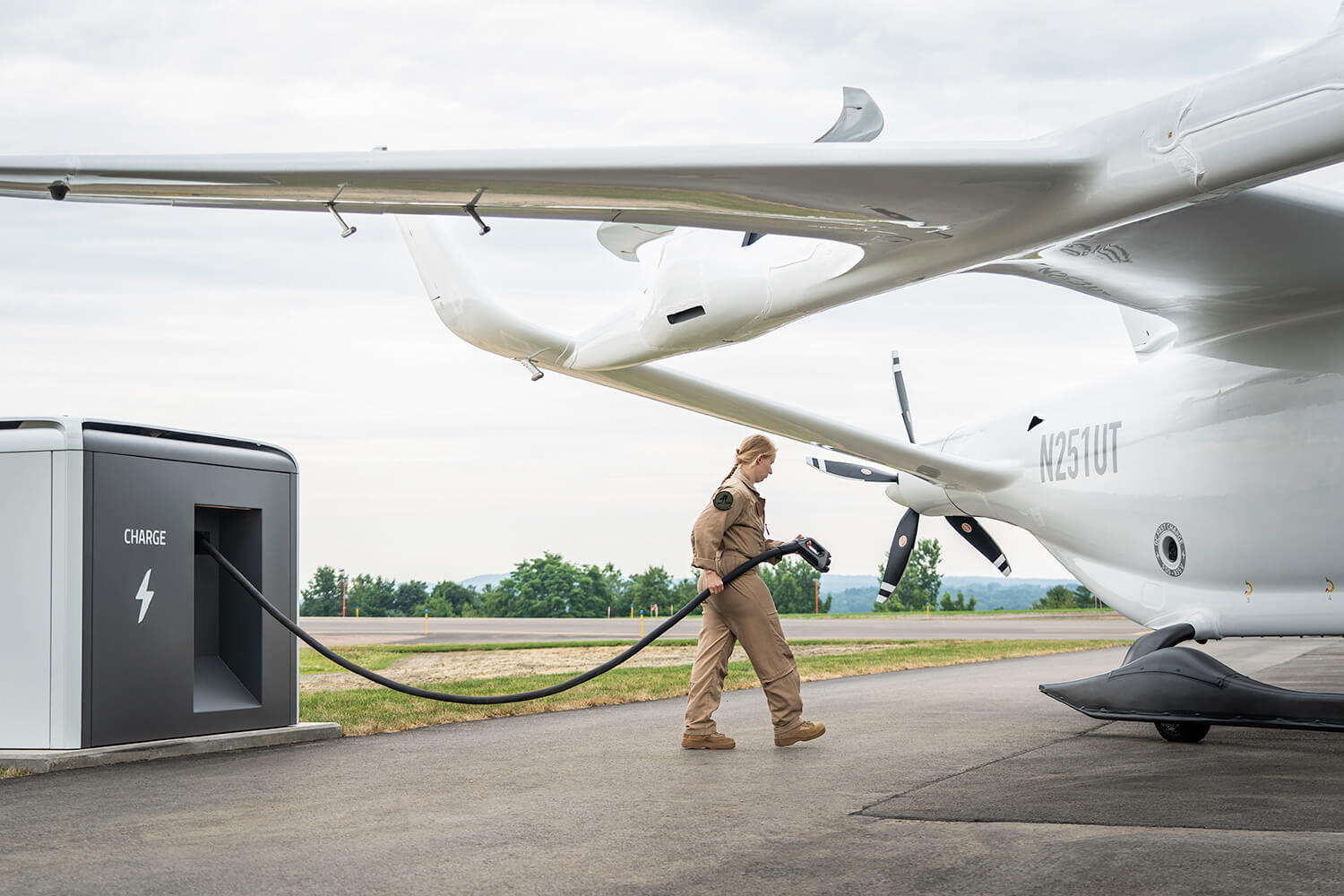The dawn of a new era in aviation is upon us, as Advanced Air Mobility (AAM) prepares to transform urban and regional air travel. At the recent National Business Aviation Association’s (NBAA) Business Aviation Conference and Expo (BACE), industry leaders from BETA Technologies and Lilium and multinational aviation service companies discussed the challenges and opportunities in bringing AAM to life, with a particular focus on the critical “final mile” of infrastructure development.
The Evolution of AAM: From Vision to Reality
Since 2017, the AAM industry has made significant strides, but not without a recalibration of expectations. Elan Head, Senior Editor at The Air Current, reflected on this journey. She noted that while progress has been substantial, the initial excitement may have created some unrealistic expectations for day one operations.
Sebastien Borel, Chief Commercial Officer of Lilium, shared his company’s strategic approach to introducing their new aircraft technology. By targeting the general and business aviation markets initially and leveraging existing infrastructure, Lilium aims to simplify early adoption and pave the way for broader implementation.
BETA’s Founder and CEO, Kyle Clark, offered his perspective that day one operations have already occurred. He highlighted his company’s early progress in military applications that has already demonstrated the practical potential of AAM technology. “We’ve already flown 92 missions, 240 take off the landings… that was the first day one for the service for us,” he said.
Infrastructure Readiness: The Backbone of AAM Success

Infrastructure readiness remains one of the most critical aspects of AAM implementation. Jeff Foland, CEO of Atlantic Aviation, and Tony Lefebvre, CEO of Signature Aviation, both emphasized that aviation infrastructure providers stand prepared and eager to support the AAM revolution.
Foland provided assurances that money will not be an issue. He explained, “At Atlantic and the infrastructure players, we’re ready. We’re here… we have capital. We’re going to put the capital to use,” He further suggested that infrastructure will unlikely be a bottleneck in scaling up AAM operations.
Lefebvre echoed this sentiment. He added that his company has been closely collaborating with aircraft manufacturers to understand their specific needs. “We’ve worked with not only the folks on stage here, but others as well… really trying to determine what is our contribution to their ability to fly,” he said.
For its part, BETA has plans for chargers to cover the entire contiguous United States without having to rely on gasoline. These can be used by electric ground vehicles as well. The company has already brought 35 online, with dozens more in progress.
Navigating Regulatory Challenges in a Global Market
As with any emerging technology, regulatory frameworks must evolve to accommodate AAM. Clark pointed out the need for recognition of battery systems as engineered products with different safety considerations than traditional fuel systems. In his assessment, this shift in perspective is crucial for developing appropriate safety regulations for electric propulsion systems.
Borel emphasized the global nature of the regulatory challenge. While progress has been made in the U.S., other countries are at different stages of regulatory development. “Our own market is global. We can’t just look at the U.S. and Europe,” Borel stated. In his opinion, market viability requires harmonized international regulations to support global AAM operations.
Scaling Up: The Path to Widespread Adoption

As the industry looks to scale up operations, several key factors emerge as crucial for success. Reducing battery costs is paramount to making AAM economically viable for scheduled operations. Borel stressed the importance of bringing costs down to below to achieve his company’s goal oft $2 per seat mile flights.
Clark highlighted the potential for AAM to utilize underserved airports and create new transportation networks. “We have this massive number of underutilized airports,” he said, “People can move from those airports to the primary airports… between nodes.” This vision of a more distributed air transportation system could revolutionize regional travel and connectivity, in his assessment.
Lefebvre predicted that initial demand for AAM infrastructure would likely come from first and last-mile connections to existing air travel, with growth clustering around existing aviation hubs before expanding to new locations.
Gaining Public Trust: The Key to Community Acceptance
As AAM technology continues to develop, industry leaders recognize the critical importance of public perception and community acceptance. Clark emphasized the need to demonstrate the utility of electric aircraft beyond luxury markets. “We need to show that this is not just for rich people flying from the Hamptons to Manhattan,” he said. Clark highlighted BETA’s efforts in Vermont to integrate electric aviation into the community fabric.
Borel stressed the importance of addressing noise concerns. He explained that Lilium has designed their aircraft to be as quiet as possible. Demonstrating these noise reduction capabilities to communities will be crucial for gaining public trust and support.
Lefebvre pointed out the ability for AAM to democratize aviation. “This technology has the potential to make air travel more accessible to a wider range of people, not just in urban areas but in underserved communities as well,” he noted. Lefebvre suggested that focusing on the broader societal benefits of AAM could also help build public support.
Environmental Impact: A Greener Future for Aviation
The potential environmental benefits of AAM were a key topic of discussion. Borel highlighted the reduced carbon footprint of electric aircraft. Our aircraft produce zero direct emissions during flight, which is a game-changer for aviation sustainability,” he said.
Clark expanded on this, explaining that AAM could play a significant role in meeting global climate goals by enabling more efficient point-to-point travel and reducing overall transportation emissions.
Lefebvre emphasized the importance of a holistic approach to sustainability. “We’re looking at everything from renewable energy sources for our charging stations to sustainable construction practices for vertiports,” he said.
The Future of AAM: Predictions and Possibilities
As the panel discussion concluded, the speakers shared their visions for the future of AAM. While cautioning against overly optimistic timelines, the overall outlook was positive. Head noted, “While we’ve seen significant progress, it’s important to recognize that widespread adoption of AAM will take time,” she stated.
Borel expressed optimism about the industry’s trajectory. He predicted commercial AAM operations in select markets within the next five years, focusing initially on existing helicopter routes and high-value corridors.
Clark forecasts a future where electric aircraft compete with ground transportation for shorter trips and reshaping regional transportation as we know it. “As we scale up operations and improve battery technology, we’ll see electric aircraft competing with ground transportation for trips up to 500 miles,” he said.
Foland emphasized the need for continued collaboration among all stakeholders to achieve the full potential of AAM. “The success of AAM will depend on all stakeholders — manufacturers, operators, infrastructure providers, and regulators — working together towards a common goal,” he concluded.
While challenges remain in areas such as public acceptance, regulatory frameworks, and infrastructure development, the transformative potential of AAM to create a more sustainable and accessible future for aviation is clear. As the industry continues to evolve and overcome these hurdles, we stand on the brink of a new era in urban and regional air transportation.

